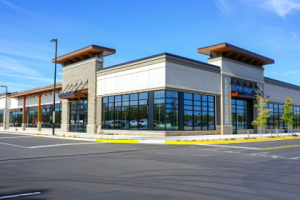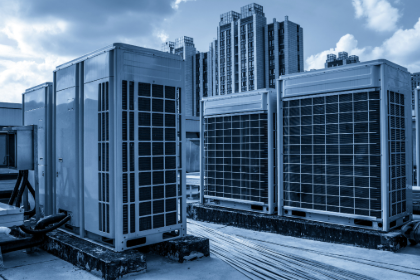Navigating the Commercial High-rise Marketplace: Current Market Conditions
Introduction: Understanding the Commercial High-rise Marketplace
The commercial high-rise marketplace is a dynamic and complex sector that plays a crucial role in shaping the urban landscape. These towering structures, often reaching dizzying heights, are not only architectural marvels but also serve as hubs for business, commerce, and innovation. Understanding the commercial high-rise marketplace requires a deep dive into its current market conditions, key factors influencing its growth, and the challenges and opportunities that lie ahead.
Analyzing Current Market Conditions in the Commercial High-rise Sector
The commercial high-rise sector has experienced significant growth in recent years, driven by factors such as urbanization, population growth, and the increasing demand for office spaces. According to a report by JLL, the global commercial real estate investment reached a record high of $800 billion in 2019, with high-rise buildings accounting for a substantial portion of this investment.
One of the key trends in the commercial high-rise marketplace is the shift towards sustainable and green buildings. With growing concerns about climate change and environmental sustainability, developers and investors are increasingly focusing on constructing high-rises that are energy-efficient, utilize renewable resources, and have a minimal carbon footprint. This trend is not only driven by environmental consciousness but also by the potential cost savings associated with energy-efficient buildings.
Another significant factor shaping the current market conditions is the rise of mixed-use developments. Developers are increasingly incorporating a blend of residential, commercial, and retail spaces within high-rise buildings to create vibrant and self-contained communities. This trend is driven by the desire for convenience and the need to optimize land use in densely populated urban areas.
Key Factors Influencing the Commercial High-rise Marketplace
Several key factors influence the commercial high-rise marketplace, including economic conditions, technological advancements, and government policies. Economic conditions, such as GDP growth, interest rates, and employment rates, play a crucial role in determining the demand for office spaces and the viability of high-rise developments. A strong economy typically leads to increased business activity and higher demand for office spaces, driving the growth of the commercial high-rise sector.
Technological advancements also have a significant impact on the commercial high-rise marketplace. The advent of smart building technologies, such as IoT sensors, automation systems, and energy management platforms, has revolutionized the way high-rise buildings are designed, constructed, and operated. These technologies not only enhance the efficiency and sustainability of buildings but also improve the occupant experience, leading to higher tenant satisfaction and increased demand for high-rise spaces.
Government policies and regulations also shape the commercial high-rise marketplace. Zoning regulations, building codes, and tax incentives can either facilitate or hinder the development of high-rise buildings. Governments that prioritize urban development and promote sustainable building practices through favorable policies can attract more investment in the commercial high-rise sector.
Navigating the Challenges and Opportunities in the Commercial High-rise Sector
While the commercial high-rise sector presents immense opportunities, it also comes with its fair share of challenges. One of the primary challenges is the high cost of construction and maintenance. Building tall structures requires substantial investment in materials, engineering expertise, and construction techniques. Additionally, the ongoing maintenance and operational costs of high-rise buildings can be significant. Developers and investors need to carefully assess the financial viability of projects and ensure a sustainable revenue stream to cover these costs.
Another challenge is the competition for tenants. With an increasing number of high-rise buildings entering the market, developers need to differentiate their offerings to attract and retain tenants. This can be achieved through innovative design, state-of-the-art amenities, and a focus on creating a unique and desirable workplace environment.
However, despite the challenges, the commercial high-rise sector offers numerous opportunities for developers, investors, and tenants. The demand for office spaces in prime locations remains strong, driven by the growth of knowledge-based industries and the need for collaboration and networking. High-rise buildings provide an opportunity to create iconic landmarks that enhance the city skyline and contribute to the overall urban fabric.
In conclusion, navigating the commercial high-rise marketplace requires a deep understanding of its current market conditions, key factors influencing its growth, and the challenges and opportunities it presents. By analyzing these factors and staying abreast of the latest trends and technologies, developers and investors can make informed decisions and capitalize on the immense potential of the commercial high-rise sector.





